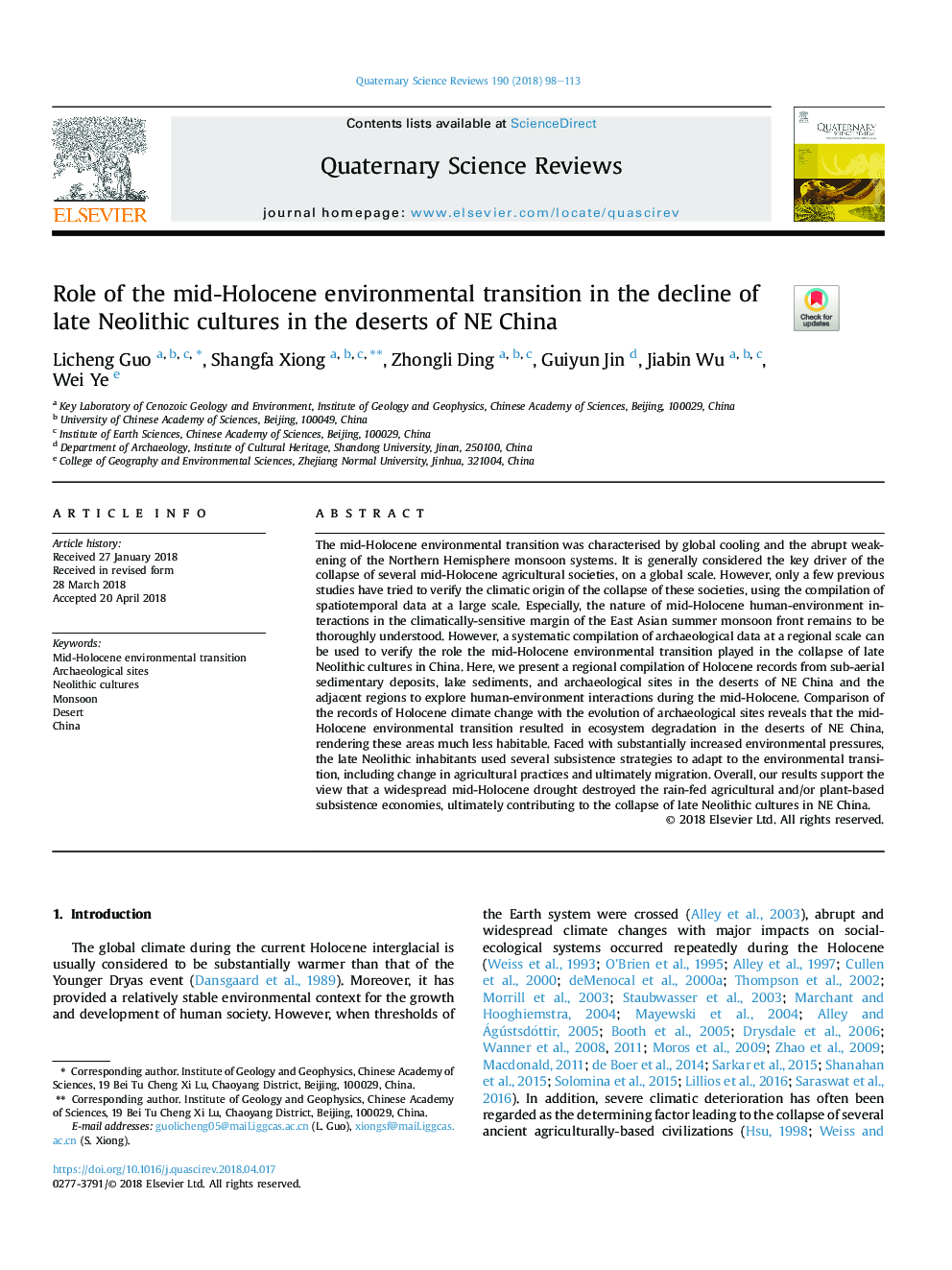| Article ID | Journal | Published Year | Pages | File Type |
|---|---|---|---|---|
| 8914794 | Quaternary Science Reviews | 2018 | 16 Pages |
Abstract
The mid-Holocene environmental transition was characterised by global cooling and the abrupt weakening of the Northern Hemisphere monsoon systems. It is generally considered the key driver of the collapse of several mid-Holocene agricultural societies, on a global scale. However, only a few previous studies have tried to verify the climatic origin of the collapse of these societies, using the compilation of spatiotemporal data at a large scale. Especially, the nature of mid-Holocene human-environment interactions in the climatically-sensitive margin of the East Asian summer monsoon front remains to be thoroughly understood. However, a systematic compilation of archaeological data at a regional scale can be used to verify the role the mid-Holocene environmental transition played in the collapse of late Neolithic cultures in China. Here, we present a regional compilation of Holocene records from sub-aerial sedimentary deposits, lake sediments, and archaeological sites in the deserts of NE China and the adjacent regions to explore human-environment interactions during the mid-Holocene. Comparison of the records of Holocene climate change with the evolution of archaeological sites reveals that the mid-Holocene environmental transition resulted in ecosystem degradation in the deserts of NE China, rendering these areas much less habitable. Faced with substantially increased environmental pressures, the late Neolithic inhabitants used several subsistence strategies to adapt to the environmental transition, including change in agricultural practices and ultimately migration. Overall, our results support the view that a widespread mid-Holocene drought destroyed the rain-fed agricultural and/or plant-based subsistence economies, ultimately contributing to the collapse of late Neolithic cultures in NE China.
Related Topics
Physical Sciences and Engineering
Earth and Planetary Sciences
Geology
Authors
Licheng Guo, Shangfa Xiong, Zhongli Ding, Guiyun Jin, Jiabin Wu, Wei Ye,
